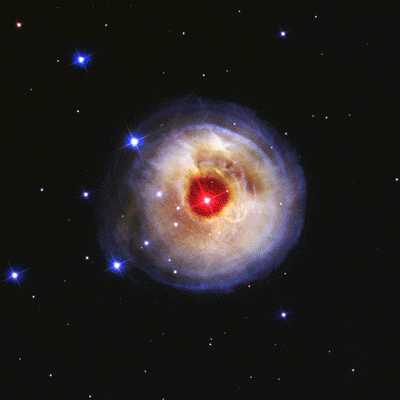Carina Nebula (NGC 3372)
Previously unseen details of a mysterious, complex structure within the Carina Nebula (NGC 3372), also called the 'Keyhole Nebula', are revealed by this image obtained with the NASA/ESA Hubble Space Telescope.
The picture is a montage assembled from four different April 1999 telescope pointings with Hubble's Wide Field Planetary Camera 2, which used six different colour filters.
The picture is dominated by a large, approximately circular feature, about 7 light-years across, which is part of the Keyhole Nebula, named in the 19th century by British astronomer Sir John Herschel. This region, about 8000 light-years from Earth, is located near to the famous explosive variable star Eta Carinae, which lies just outside the field of view toward the upper right.
The Carina Nebula also contains several other stars that are among the hottest and most massive known, each about 10 times as hot, and 100 times as massive, as our Sun.
The circular 'keyhole' structure contains both bright filaments of hot gas and dark silhouetted clouds of cold molecules and dust, all of which are in rapid, chaotic motion. Two striking large, sharp-edged dust clouds are located near the bottom centre and upper-left edges of the image. These large dark clouds may eventually evaporate or, if there are sufficiently dense condensations within them, give birth to small star clusters.
The Carina Nebula, with an overall diameter of more than 200 light-years, is one of the outstanding features of the southern-hemisphere part of the Milky Way.















 Germany
Germany
 Austria
Austria
 Belgium
Belgium
 Denmark
Denmark
 Spain
Spain
 Estonia
Estonia
 Finland
Finland
 France
France
 Greece
Greece
 Hungary
Hungary
 Ireland
Ireland
 Italy
Italy
 Luxembourg
Luxembourg
 Norway
Norway
 The Netherlands
The Netherlands
 Poland
Poland
 Portugal
Portugal
 Czechia
Czechia
 Romania
Romania
 United Kingdom
United Kingdom
 Slovenia
Slovenia
 Sweden
Sweden
 Switzerland
Switzerland
































